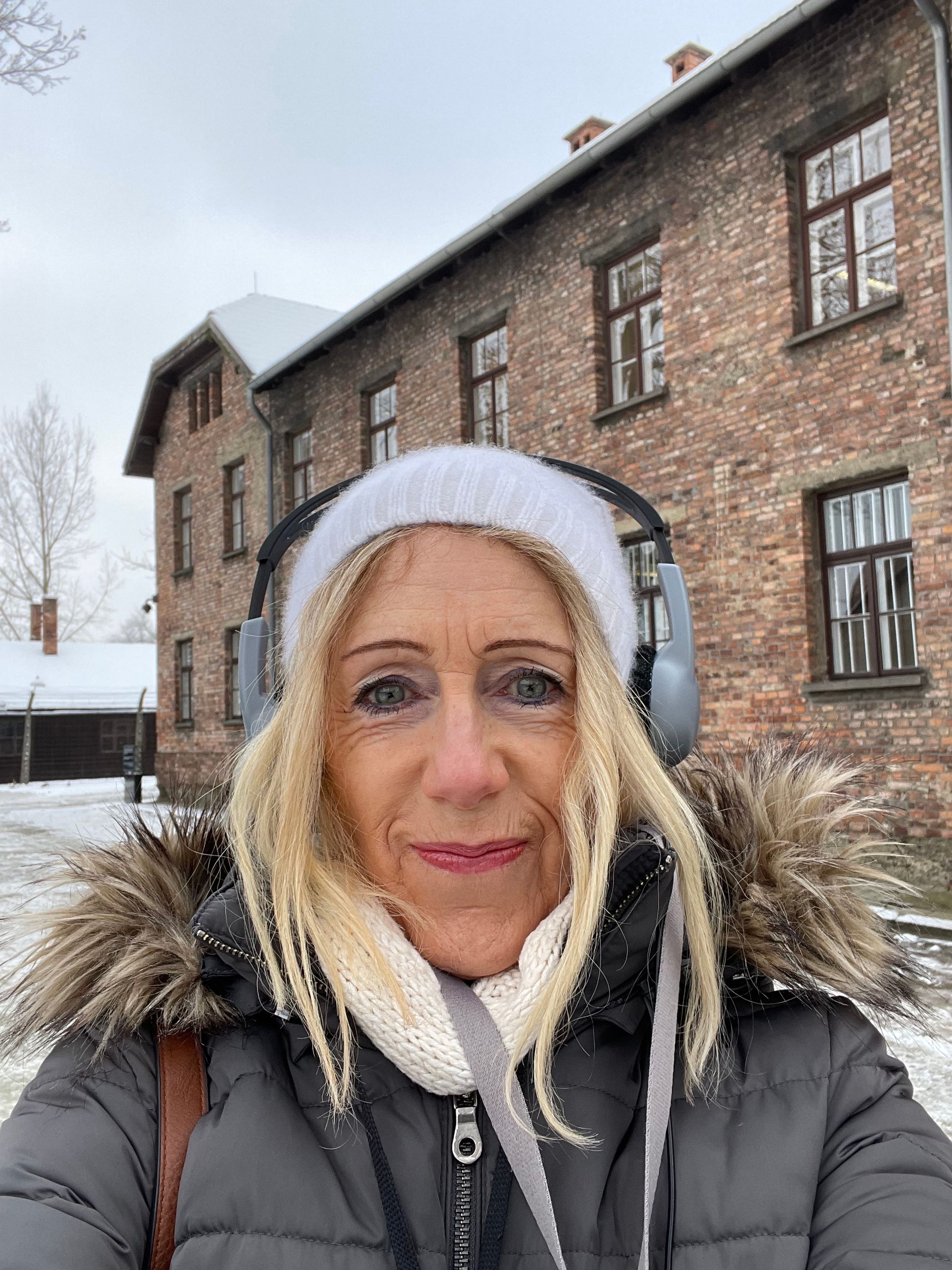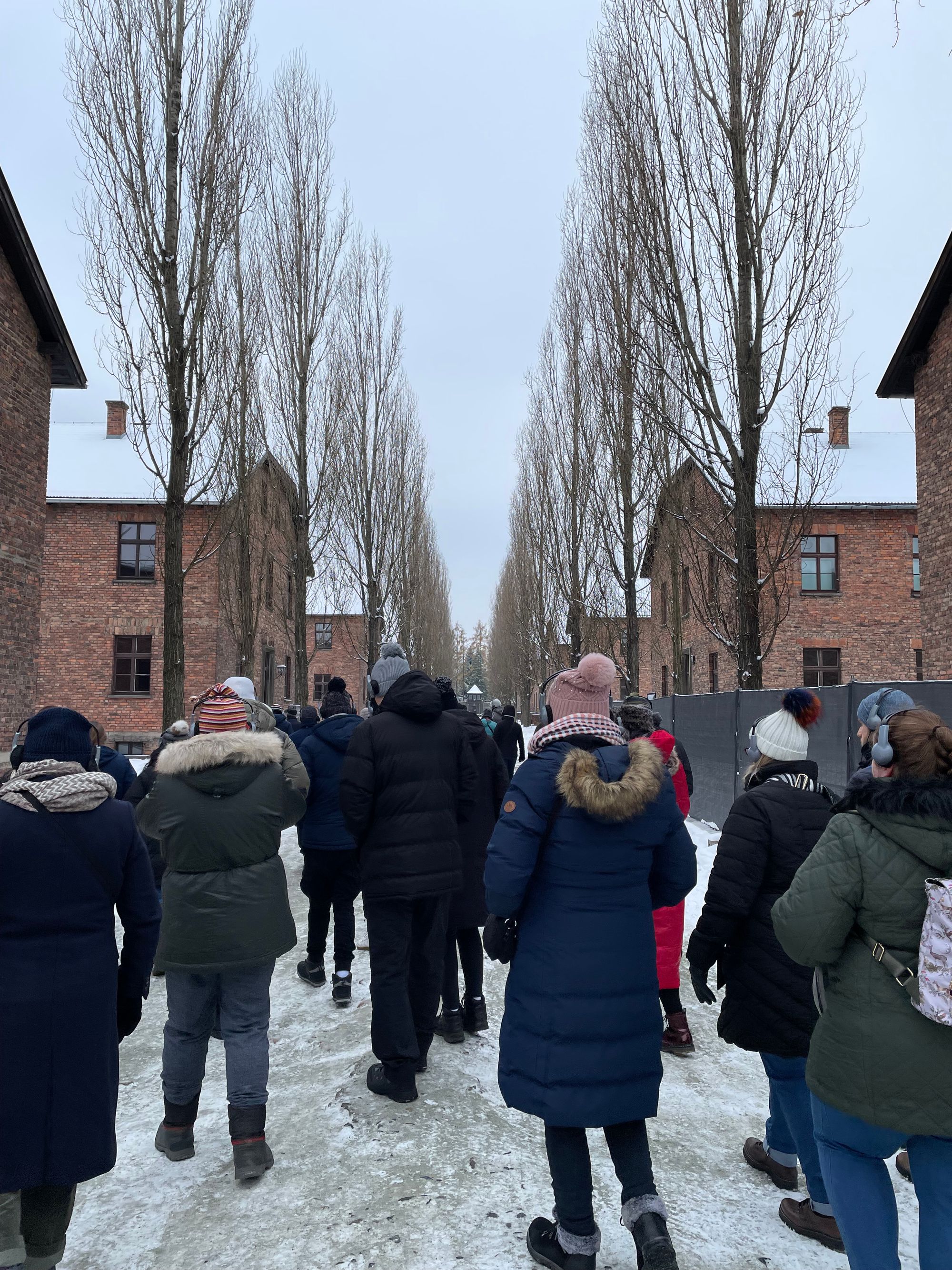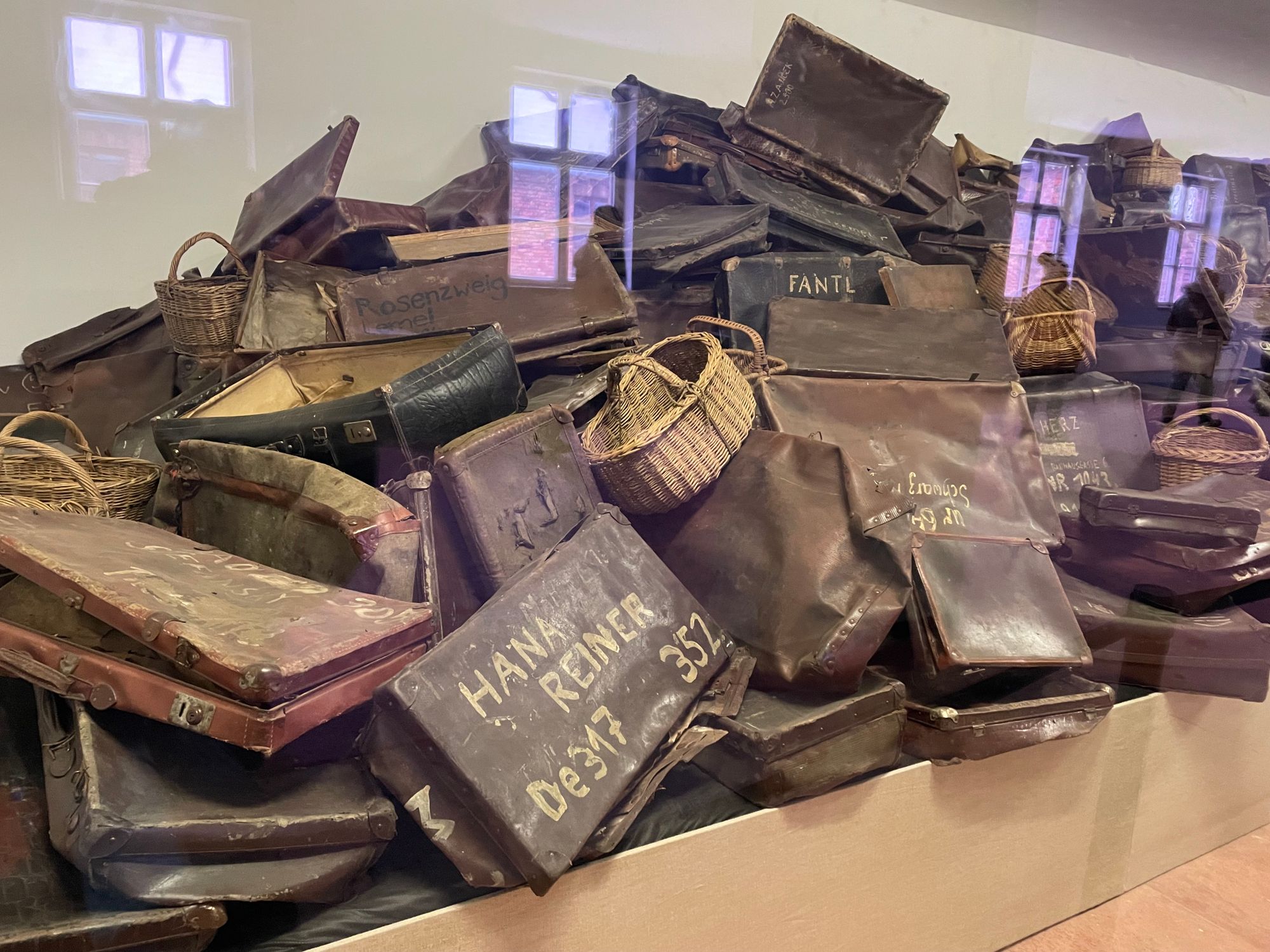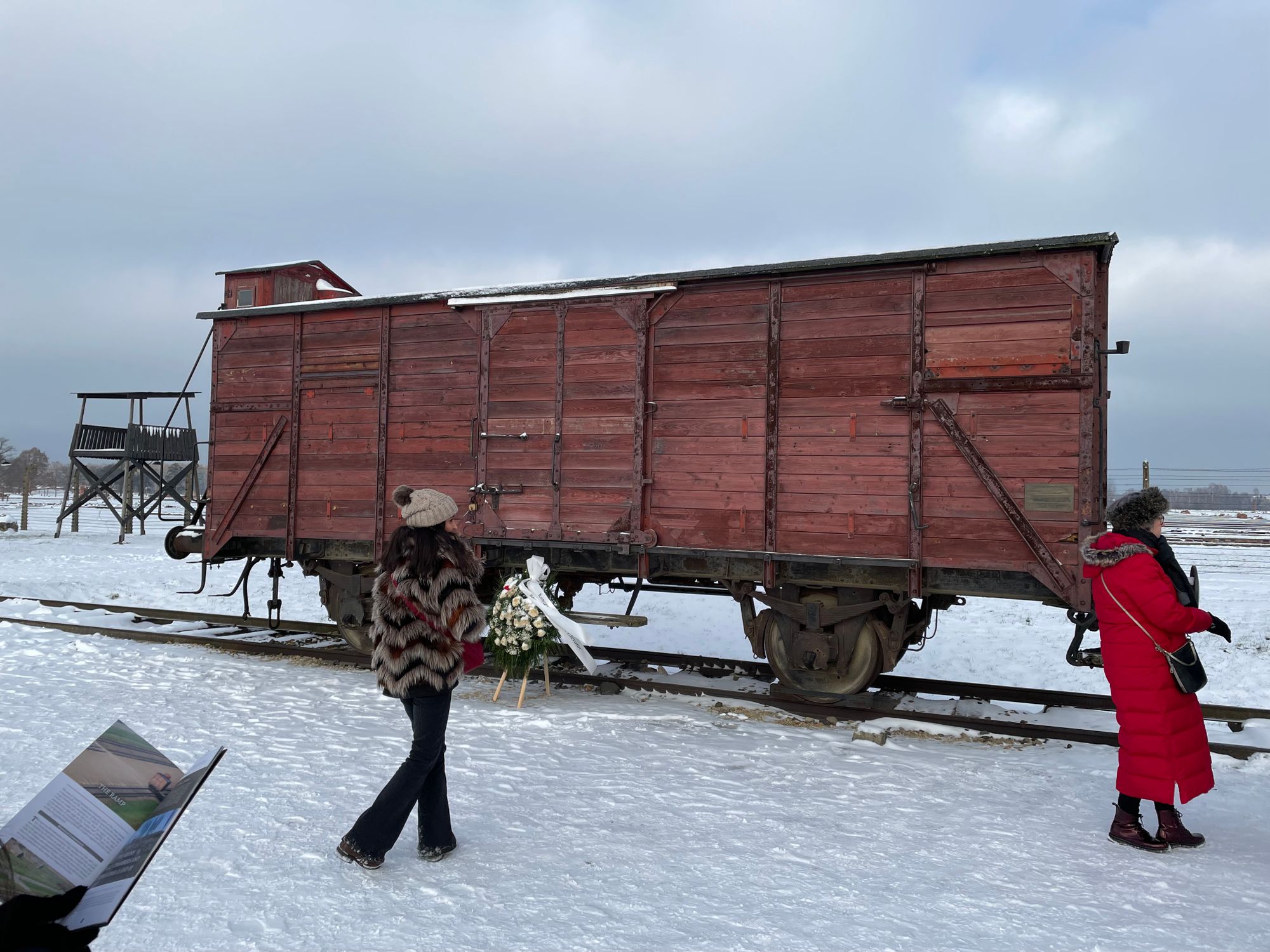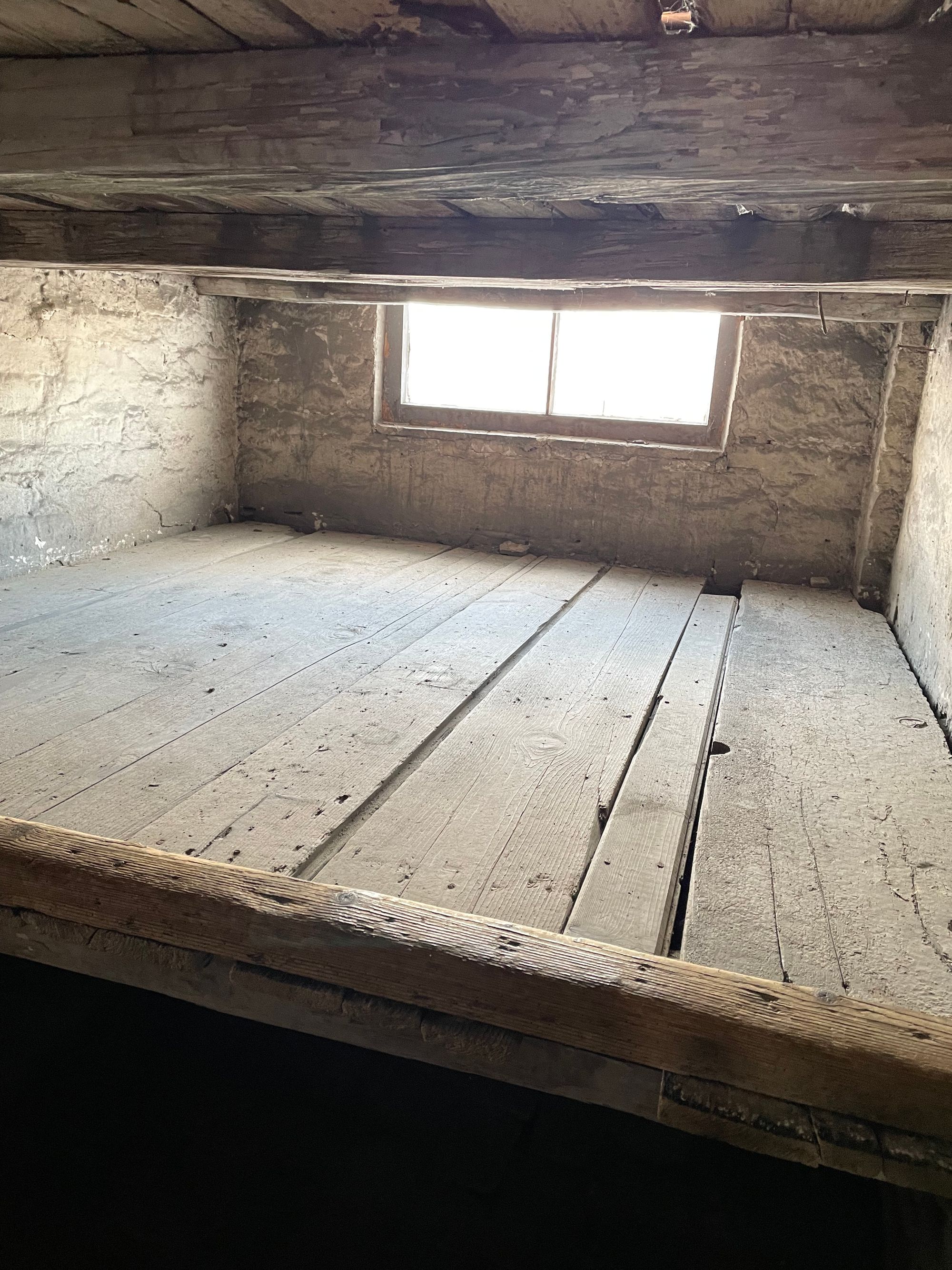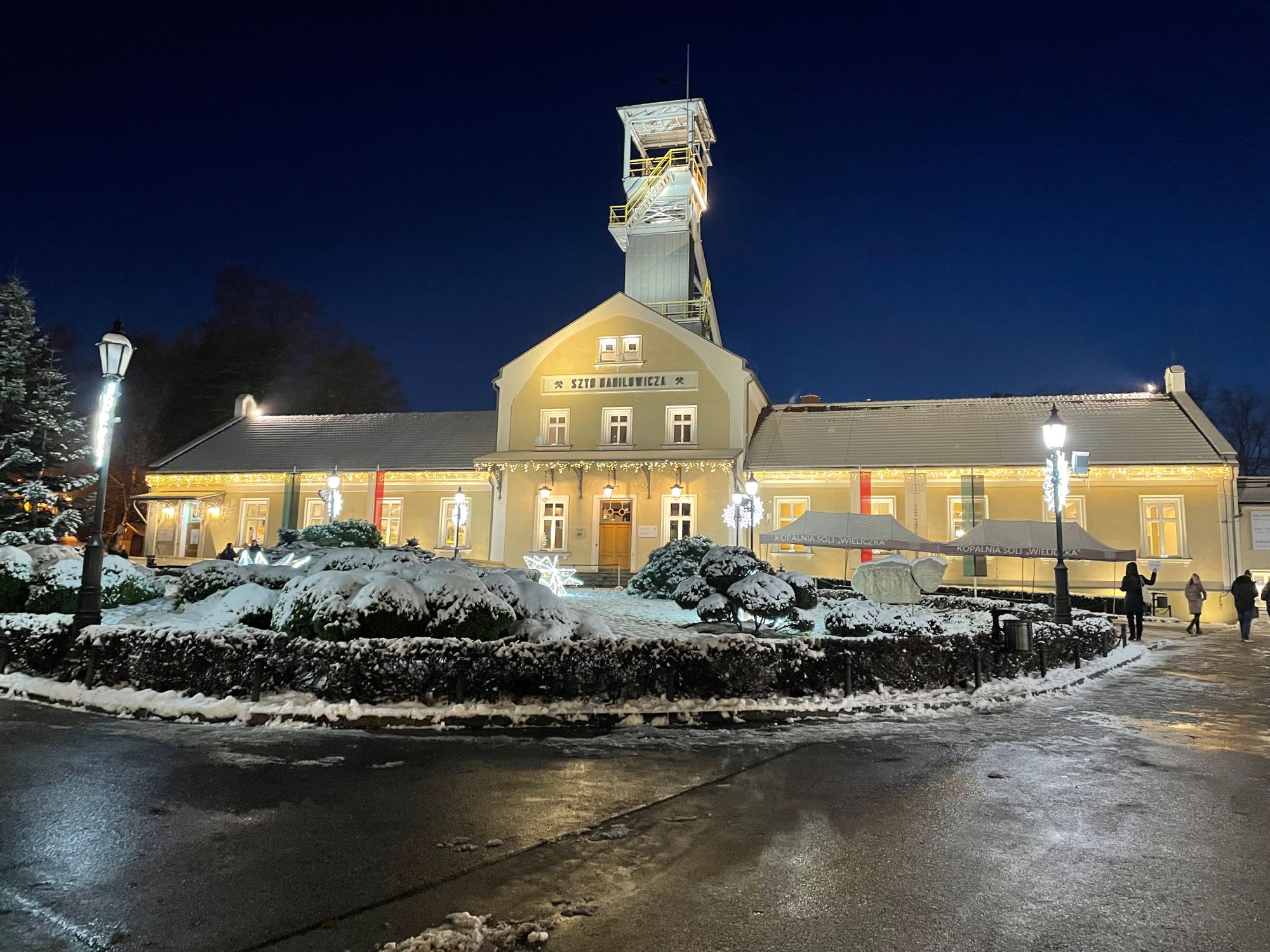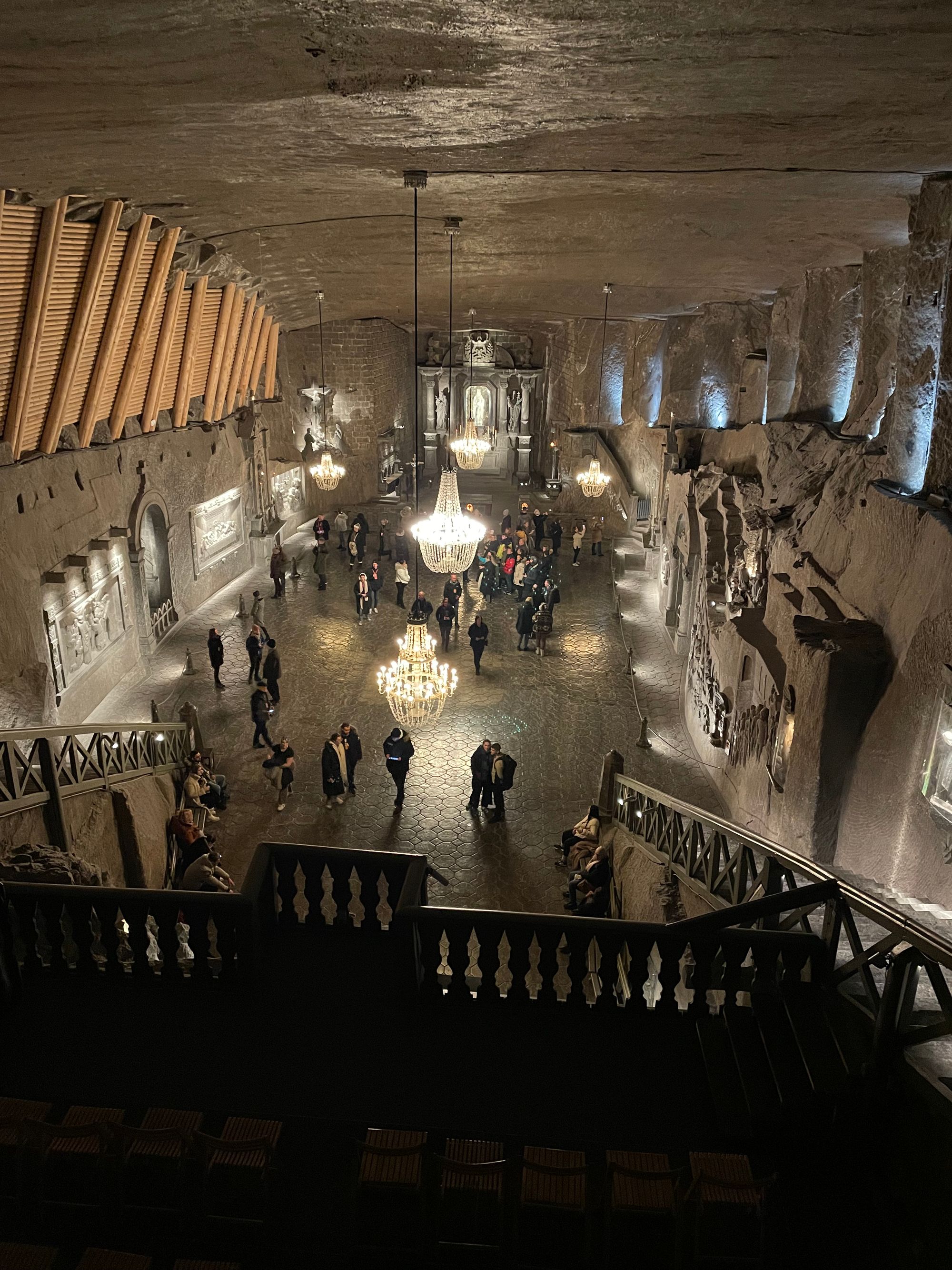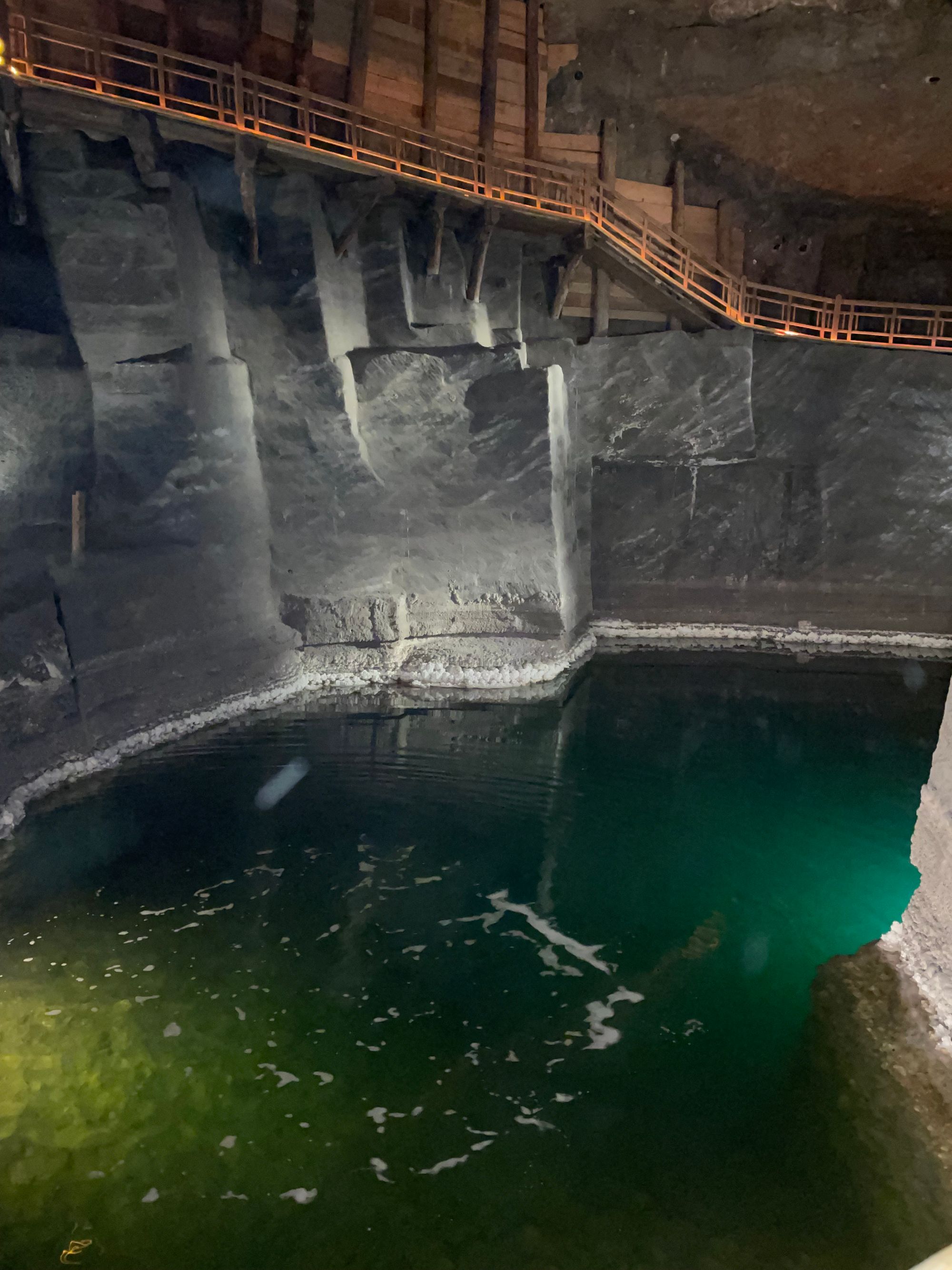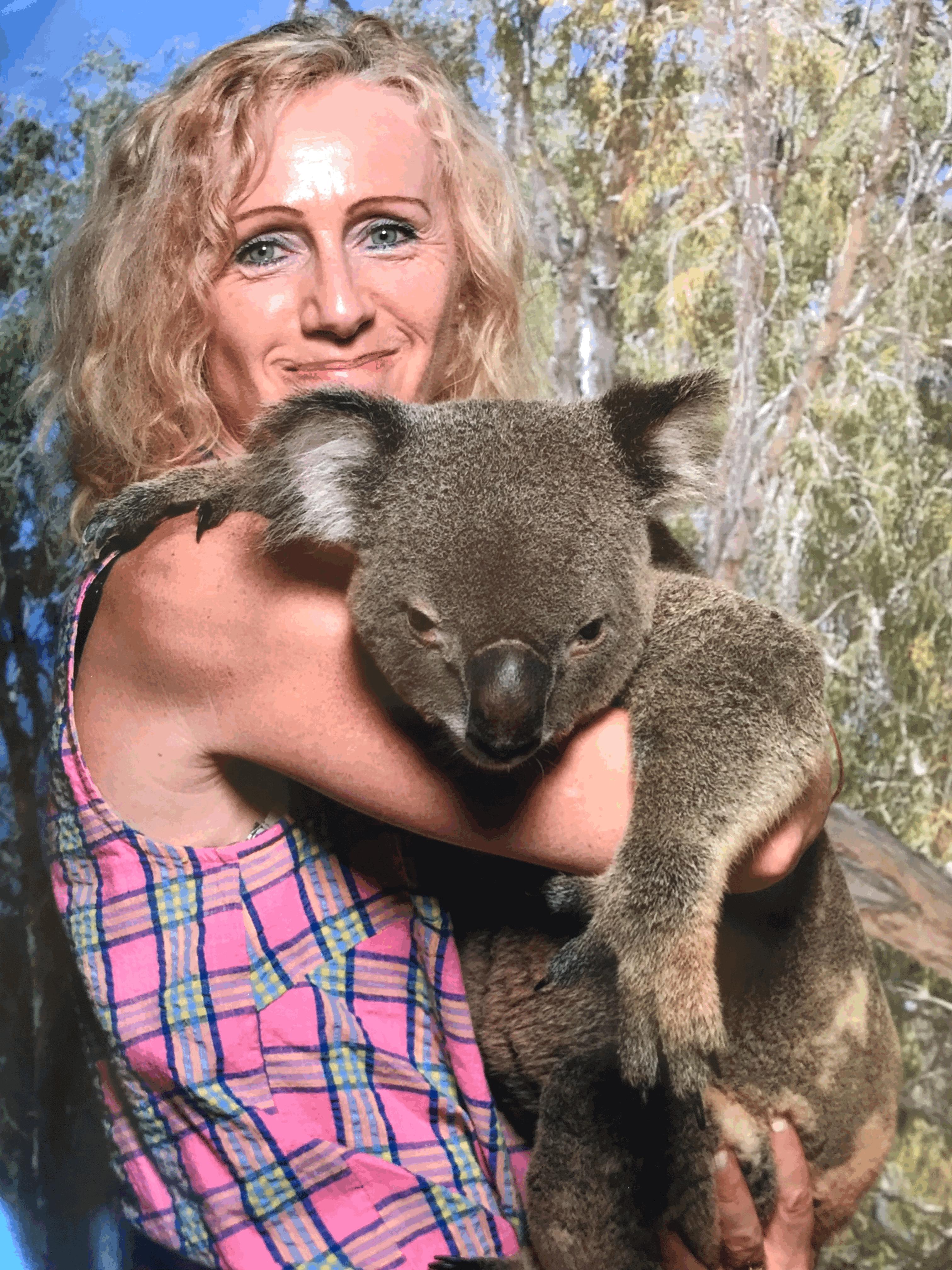My second day was an early (7am start) which was a pre-booked trip to Auschwitz, Birkenau, and the Wieliczka Salt Mine. This was a long day (approximately 11 hours). There were many queues for snacks and drinks at our rest points throughout the day, so it is advisable to take your own food and drink with you. You could purchase lunch boxes from the tour guide for 30 Zloty, but as I was on a B&B option at my hotel I asked them to make up a breakfast for me to take out – this was a good move, as it was like breakfast and lunch combined!
It took just over an hour to get to Auschwitz, and on arrival we had to have photo ID checks and go through an airport-type security. We were also given ID badges on lanyards and assigned to a specific group for the tour and, once again, bags other than handbags weren’t allowed in and had to be left on the minibus. We were then all issued with headphones so that we could listen to the tour guide as we went round the camp.
Auschwitz was the Nazis’ largest concentration and extermination camp and is about 40 miles west of Krakow. Between 1940 and 1945 over a million people, many of whom were Jews, were killed at the camp. Trains transporting Jews would arrive frequently at the camp from virtually every country in Europe. It was a very real experience visiting here, and hard to understand how atrocities such as this were ever allowed to take place. People were brought here with the impression that they were going to begin new lives and were made to undress in the disrobing area and enter what they thought was a shower block when it was in fact a gas chamber. Crematory ovens were also constructed to dispose of the dead bodies. Only those who were deemed fit for work were spared the death penalty, but women, pregnant woman, children, and those who were sick were no use to the camp and were killed. The conditions in the camp were terrible, and many of those who survived the death penalty suffered from sickness and diseases. Visiting during the minus 5 degrees centigrade temperature that morning made me realise how extremely cold it must have been during the winter months. All the belongings of the victims were subsequently taken and sold to make money. Many medical experiments were also carried out at the camp, mainly on women, by Nazis doctors, and many of these left people with permanent scarring and disabilities.
About two miles from the main camp is the Birkanau camp, known as Auschwitz II. This was the largest of the more than 40 camps and sub-camps of the original Auschwitz complex. It is thought that around 90 percent of the Auschwitz victims died at Birkenau.
Both camps had an eerie feel about them, and there are many photographs on display that were illegally taken at the time that help to portray events at the camps. The most chilling parts were seeing where the victims were made to sleep and wash – many barely being given time to wash their faces. Conditions were squalid and cramped, and the museum area houses hundreds of bags, shoes, hair samples, etc., that were taken from the victims and shows the true horror of the situation. I was glad that I had the opportunity to visit these notorious camps, and it makes me feel truly lucky that I have never had to experience anything like that in my life!
My next visit, and on a less sombre note, was to the Wieliczka Salt Mine that took over an hour to get to. The salt mine is situated in the town of Wieliczka and is the world’s longest active salt mine. This UNESCO World Heritage Site was first discovered in the late 1200s and has been transformed into an incredible underground kingdom that has to be seen to be believed. The mine is open from 9am until 5pm each day and tours take approximately 2.5 hours. Bags, once again, other than handbags, could not be taken in and had to be left on the minibus.
I was amazed by this mine, as I have visited salt mines in other places but have never seen anything like this one before. I didn’t feel as if it was the least bit claustrophobic like some of the comments I have read, and I’m not over keen on enclosed spaces. There were many (800 to be precise) steps to walk down into the mine, but they were good, well-maintained steps that were easy to walk down, and the good news is that there is a lift to take you back up, which was quick! My tour guide for the trip was great: amusing and knowledgeable. The time down there went quickly, as we were taken to see saline lakes and underground chambers, along with transportation, machinery and tools that were used down there through the ages. The best part of the trip, though, had to be the unique Kinga’s Chapel where you can get baptised or married, and apparently weddings only cost 1000 Euros! What a unique wedding that would be!
Whilst down in the mine, you needn’t worry about getting hungry, thirsty, buying gifts to take home, or needing the toilet, as the mine has it all. It was quite warm in the mine, too, which I hadn’t expected, as it was freezing outside.
There is also a Graduation Tower at the mine, which is not included in the general trip, and it is supposed to offer you purified air that is good for those with allergies, respiratory, and skin issues. Our guide did tell the group that the mine itself is still good for your health and he had us all doing breathing exercises while we were down there.
So, this was a great day out and, although it was a long one, I didn’t feel as if it was too much in one day as I had wondered about. It was then only a short trip (just over 30 minutes) back to Krakow. I would certainly recommend a trip here, but it is advisable to book before you travel, especially during peak season, as the trips looked full when I was there and many coaches and minibuses were arriving all the time – I did hear that Auschwitz gets around 12,000 visitors a day, but I don’t know whether that depends on the time of year.
